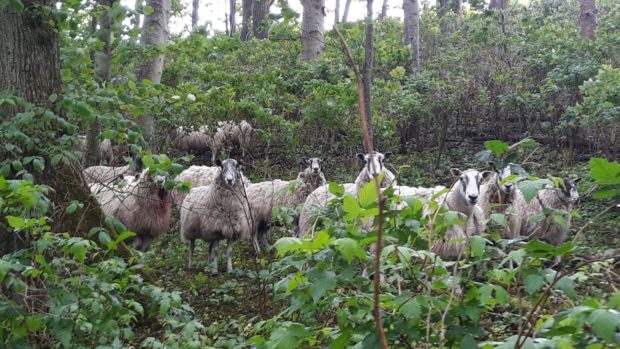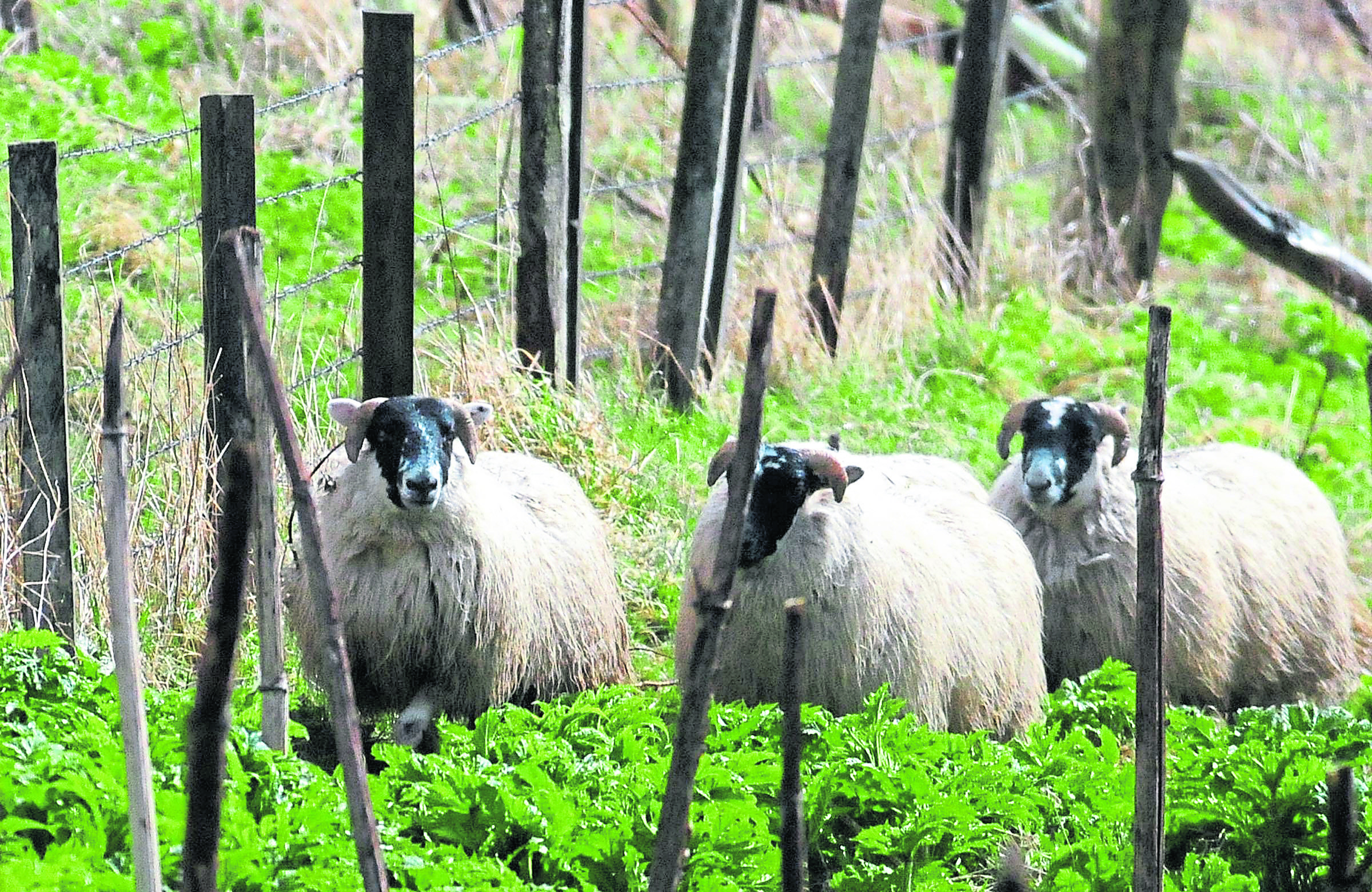A flock of woolly warriors have made it their mission to munch away dangerous giant hogweed plants.
The hazardous growth, which is not native to the UK, can reach heights of up to 16 feet.
If its sap comes into contact with human skin, and the skin is then exposed to the sun, it can blister badly.
North-east sheep have been enlisted by the Scottish Invasive Species Initiative to help dispel the invasive plants along the River Deveron.
The flock was introduced onto the strip of woodland beyond the Macduff distillery as part of a trial last spring, and have now arrived back to the woodland after a well-earned winter break.
There are fewer sheep on site in 2020 compared to last year, to avoid overgrazing.
Karen Muller, project officer for the Scottish Invasive Species Initiative, said: “We are really pleased with how the first year of the trial has gone.
“The sheep did what we hoped they would do and ate away at the Giant hogweed plants with no ill-effects.
“We’ve made a few adjustments this year and will continue to monitor closely how this season goes.
“The trial is only possible through the support of the community – both the farmer we are working with on site and local people acting responsibly while walking in the woods – and we really appreciate the help given to our team to allow this.
“Hopefully, in time, we can look to clear the site of the dangerous giant hogweed to make it safer for everyone to enjoy.”
The sheep were recruited to the grazing trial to help develop a non-chemical and sustainable approach to hogweed control which could be adapted and adopted by land managers elsewhere.
The grazing impacts of the flock were monitored last year by the Scottish Invasive Species Initiative and Aberdeen University through vegetation surveys.
The sheep had developed a taste for leaves and grazed the plants to the extent that they effectively suppressed hogweed growth across the site.
Anyone wishing further information can contact local project officer Karen Muller at KarenMuller@deveron.org or on 07483 319448.











